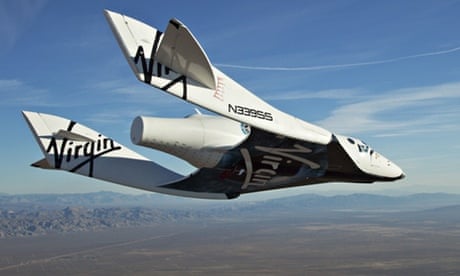An obvious solution to enabling a sustainable future is to consume less. This is a laudable goal but in a society driven by consumption, it’s not an achievable one. The world’s population needs to both consume less and expand its resource base and seeking energy and raw materials from space is one way to do this.
But surely this could never be economically viable? At today’s prices perhaps not. Yet in 20 years it is a safe prediction that increasing scarcity will have driven up the cost of energy and many critical metals by at least 10 or 20 times in real terms. Space access technologies will also have improved. By the 2030s or 2040s, obtaining extraterrestrial resources will be cost effective. Some companies and governments have recognised this future reality and are making ambitious plans.
The next commercial frontier
In April 2014, researchers at the Japan Aerospace Exploration Agency (JAXA) revealed a technology road map for space-based solar power (SBSP). This would place vast solar power satellites in orbit, and could beam 1 gigawatt of power to a ‘rectenna’ island off Tokyo sometime in the 2030s.
In another plan to utilise the resources of space, US companies Planetary Resources and Deep Space Industries, intend to mine asteroids. About 1,500 near-Earth asteroids are prime candidates for mining operations, with some estimated to contain 1.5 times the known world-reserves of platinum group metals. Even at today’s prices, many individual asteroids are thought to harbour raw materials worth more than $100bn.
Given the above, it is not surprising that corporate interest in space is growing. Test flights of Virgin Galactic’s craft, which will carry passengers to and from space, continue, while Orbital Sciences Corporation and SpaceX have also each begun to provide a commercial cargo service to the International Space Station. In May 2014, SpaceX revealed its Dragon Version 2 spacecraft. Within a few years this will be ferrying astronauts as well as cargo for NASA. According to the company, it will also touch down “with the precision of a helicopter” using its partially-3D-printed rocket engines.
Governments are getting in on the action
China is taking the lead with its Chang’e lunar exploration program. This has already landed a space probe on the moon, and in 2017 intends to return a lander to the Earth with a cargo of lunar rock. If all goes well, there could be a manned Chinese moonbase by the 2030s. This could cement China as a dominant 21st century superpower, as well as deliver the kind of technological advantages that the US reaped from Apollo. China’s lunar ambitions may also safeguard future energy supplies.
Chang’e chief scientist, professor Ouyang Ziyuan, is one of many who believe that a lunar resource called helium-3 could fuel future nuclear fusion power stations. Helium-3 is extremely rare on Earth, but in future could be worth billions of dollars a tonne as a clean nuclear fuel. The estimated 1.1m tonnes of helium-3 contained in the lunar topsoil could therefore justify a long-term industrial occupation of the moon. Alone among nations, China has both the money and the forward-looking political apparatus to achieve this.
Russia has on occasion linked a potential future lunar presence to helium-3 mining. Unfortunately, plans by NASA to investigate the possibility were quashed in 2010 when President Obama cancelled a lunar programme called Constellation. In January 2014, NASA did announce a modest initiative called Lunar CATALYST to assist the private sector in developing ‘lunar cargo transportation’.
In 2015, we will also enter the final straights of the Google Lunar XPRIZE. Launched in 2007, this offers $20m to the first private company to land a robot on the moon. The deadline is 31 December 2015, with eighteen teams still in the game.
A future of exterrestrial resources
Over the next few years these initiatives are likely to generate considerable interest in space as the next commercial frontier. In parallel, humanity’s right to exploit extraterrestrial resources is likely to be questioned. We may, for example, come to debate whether it is more appropriate to desecrate the Arctic before mining the Moon.
We cannot recklessly consume the finite resources of our motherworld forever. In addition to learning to live more sustainably, in the long-term we have to move beyond sustainability to obtain resources from space. Ever since our ancestors dragged themselves out of the oceans, rising to the challenge of a new frontier has been what we have done best.
Christopher Barnatt is associate professor of strategy and future studies, Nottingham University Business School
Read more like this:
- Meeting water and energy challenges in agri-food sector with technology
- Oddly sustainable: rhino-saving drones, smashable coffee cups and more
- Advertisement Feature: 3 tips for companies to reduce carbon in their supply chains - infographic
The technology and innovation hub is funded by BT. All content is editorially independent except for pieces labelled advertisement feature. Find out more here.
Join the community of sustainability professionals and experts. Become a GSB member to get more stories like this direct to your inbox
